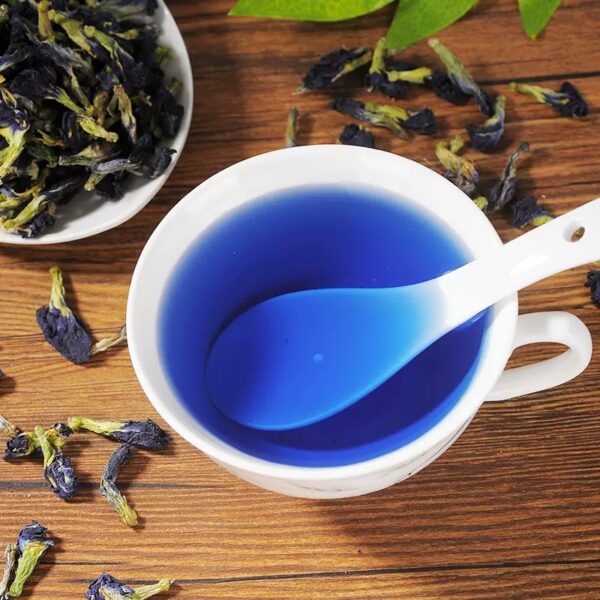
# Blue Tea: A Unique and Refreshing Beverage
## What is Blue Tea?
Blue tea, also known as butterfly pea flower tea, is a caffeine-free herbal infusion made from the vibrant blue petals of the Clitoria ternatea plant. This stunning beverage has been enjoyed for centuries in Southeast Asia and is now gaining popularity worldwide for its unique color and potential health benefits.
## The Origin of Blue Tea
Native to tropical regions of Southeast Asia, blue tea has been a staple in traditional medicine and cuisine for generations. The butterfly pea flower, which gives the tea its distinctive hue, grows abundantly in countries like Thailand, Vietnam, and Malaysia. Historically, it has been used in Ayurvedic medicine and as a natural food coloring.
## Why is Blue Tea Blue?
The striking blue color comes from anthocyanins, powerful antioxidants also found in blueberries and blackberries. What makes blue tea particularly fascinating is its color-changing properties. When lemon juice or other acidic ingredients are added, the tea transforms from deep blue to vibrant purple or pink due to the pH change.
## Health Benefits of Blue Tea
1. Rich in Antioxidants
Blue tea contains high levels of antioxidants that help combat free radicals and may reduce oxidative stress in the body.
2. May Support Brain Health
Some studies suggest that compounds in butterfly pea flowers may help improve memory and cognitive function.
Keyword: blue tea
3. Potential Anti-Inflammatory Effects
The tea’s natural compounds may help reduce inflammation in the body.
4. Caffeine-Free Alternative
Unlike traditional teas, blue tea contains no caffeine, making it an excellent choice for those looking to reduce their caffeine intake.
## How to Prepare Blue Tea
Making blue tea is simple:
- Bring water to a boil (about 200°F or 93°C)
- Add 5-10 dried butterfly pea flowers to a teapot or infuser
- Pour hot water over the flowers
- Steep for 5-7 minutes
- Strain and enjoy plain or with honey, lemon, or mint
## Creative Ways to Enjoy Blue Tea
1. Color-Changing Lemonade
Add lemon juice to watch your blue tea transform into a purple-pink hue.
2. Iced Blue Tea Latte
Mix chilled blue tea with coconut milk for a refreshing tropical drink.
3. Blue Tea Cocktails
Use blue tea as a natural coloring agent in gin or vodka-based cocktails.
4. Blue Tea Ice Cubes
Freeze brewed blue tea in ice cube trays to add color to any beverage.
## Where to Find Blue Tea
Blue tea can be purchased at specialty tea shops, health food stores, or online retailers. Look for organic, high-quality dried butterfly pea flowers or pre-packaged blue tea blends. Some stores also carry blue tea powder for convenient preparation.
## Final Thoughts
Blue tea offers a unique combination of visual appeal, delicate flavor, and potential health benefits. Whether you’re looking for a caffeine-free alternative, a natural food coloring, or simply want to try something new, blue tea is worth exploring. Its versatility makes it perfect for both hot and cold beverages, as well as creative culinary applications.